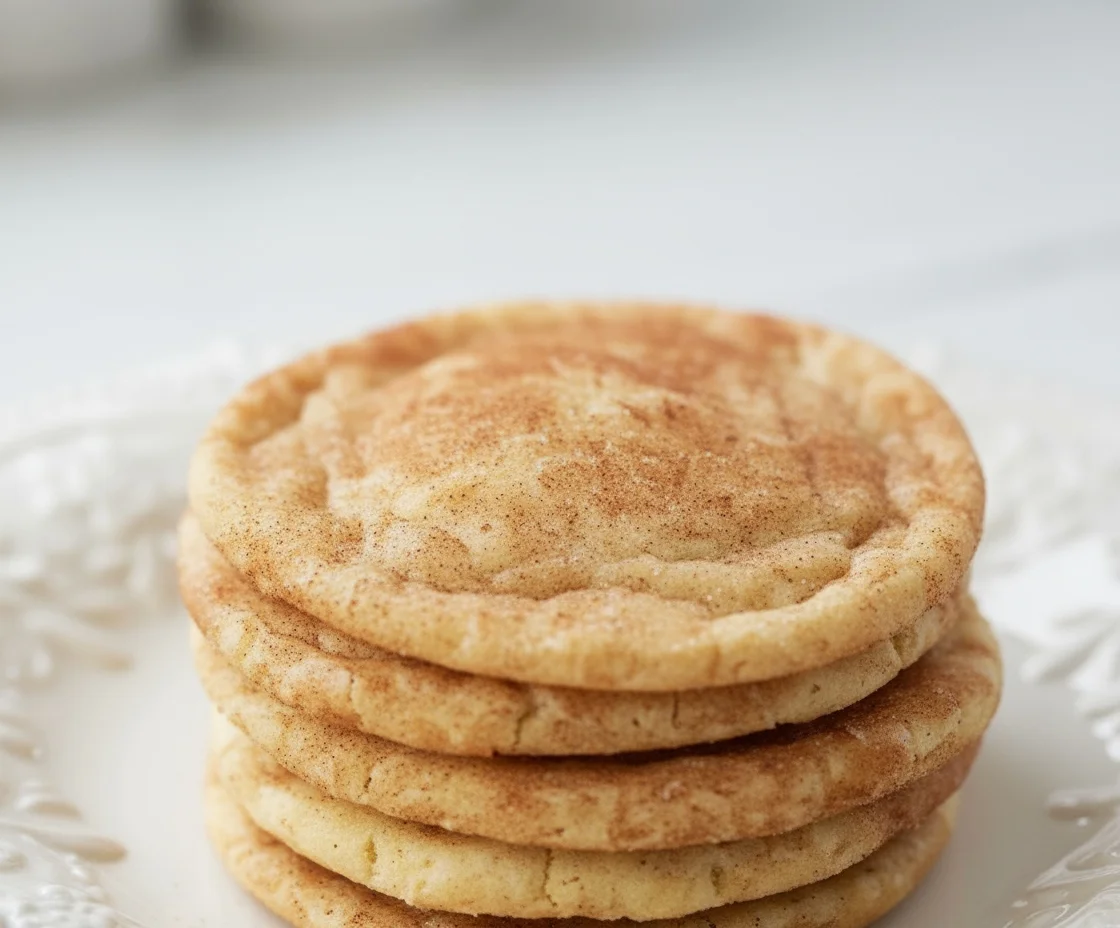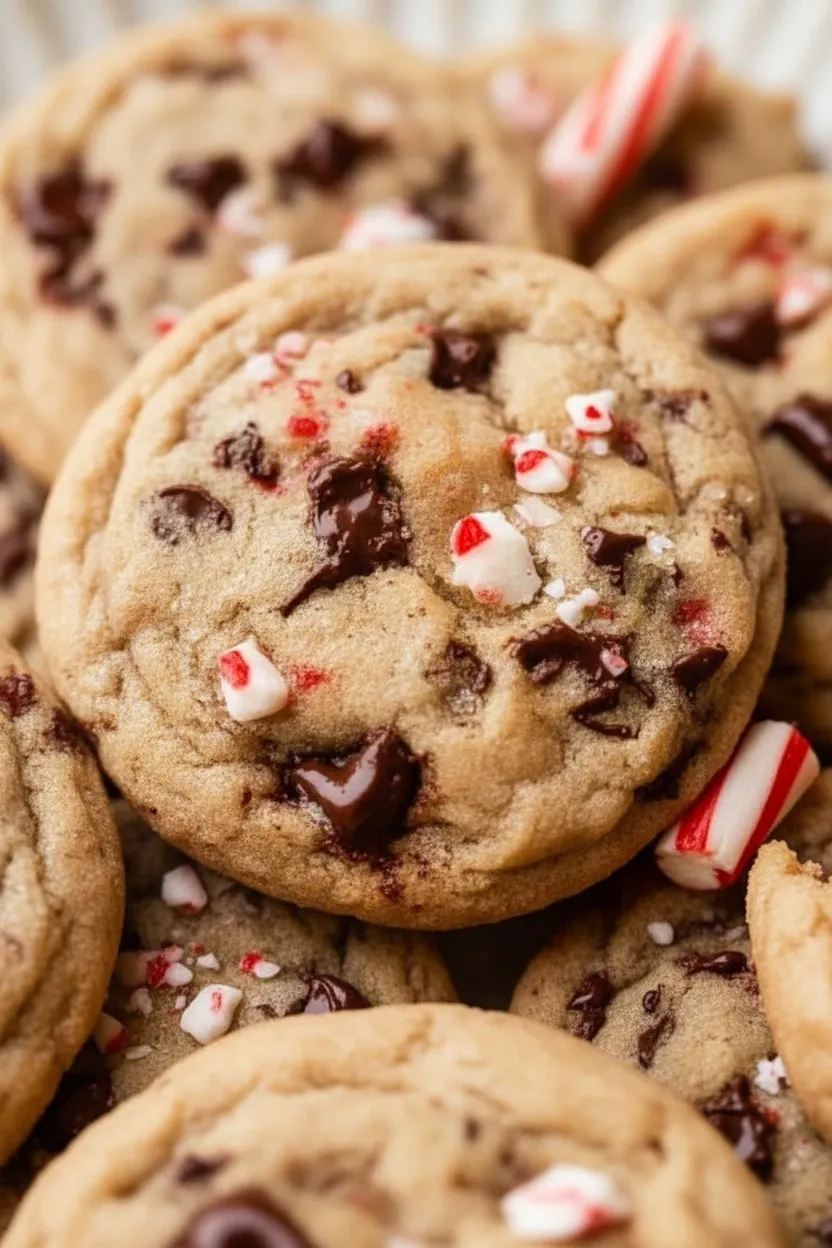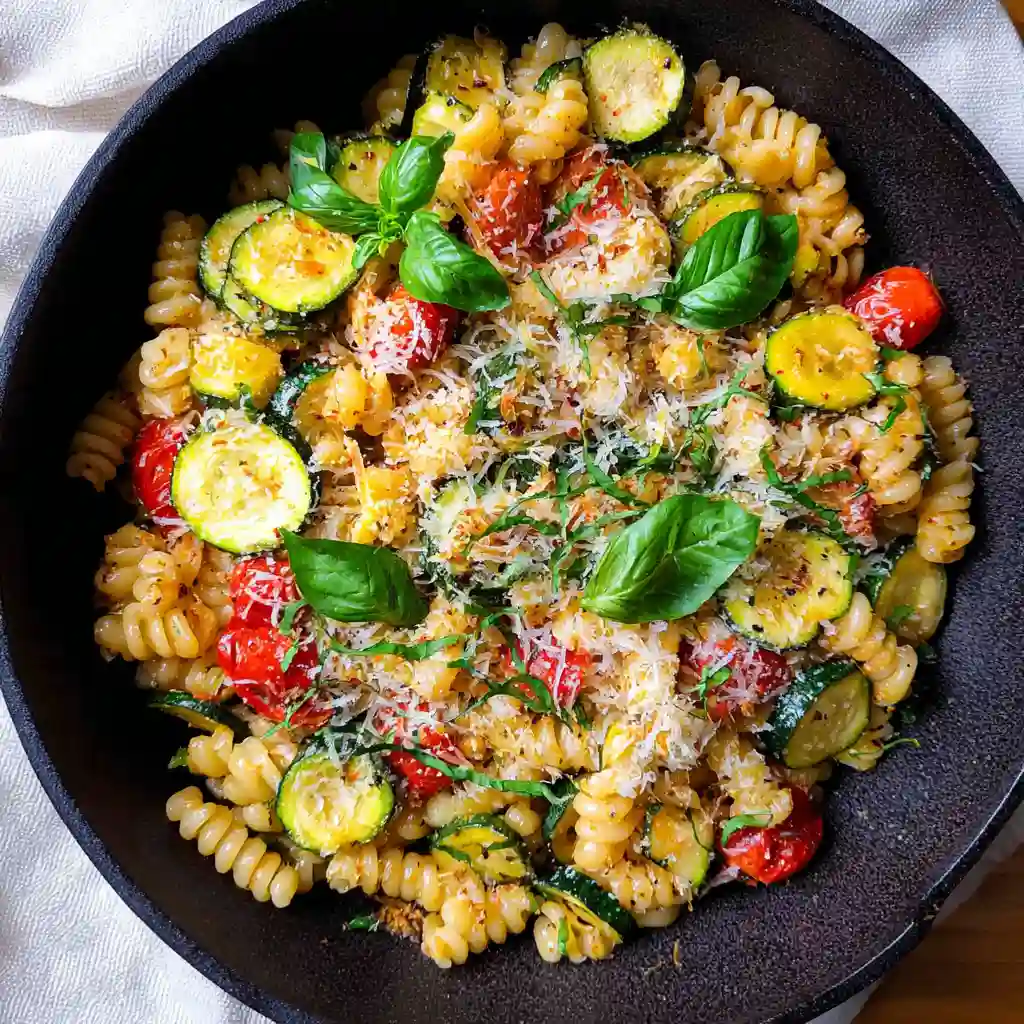The secret to achieving the best snickerdoodle cookie recipe lies in a few carefully guarded techniques that transform ordinary ingredients into extraordinary results. First, the butter must be just softened—not melted or too cold—which creates the perfect texture balance between soft centers and slightly crisp edges. Additionally, creaming the butter and sugar for at least 4-5 minutes builds airiness into the dough, resulting in those signature pillowy tops with beautiful crackled surfaces that make snickerdoodles so visually appealing. The double-roll technique in cinnamon sugar isn’t optional; it’s what gives these cookies their intense flavor coating and creates that iconic sweet-spicy exterior everyone craves. Moreover, resisting the urge to flatten the dough balls before baking allows them to spread naturally while maintaining their thick, chewy texture throughout.
Understanding the Secret Ingredient: Cream of Tartar
Cream of tartar serves as the defining ingredient that separates authentic snickerdoodles from ordinary sugar cookies. This acidic powder, scientifically known as potassium bitartrate, reacts with baking soda to create carbon dioxide bubbles that give snickerdoodles their characteristic puffy, pillowy tops. Furthermore, cream of tartar provides the subtle tangy flavor that balances the sweetness of the cinnamon-sugar coating, creating a complex taste profile that keeps people reaching for another cookie. Most recipes call for 1½ to 2 teaspoons of cream of tartar, though adjusting to 1 teaspoon reduces the tanginess for those who prefer a milder flavor. Without this ingredient, you’ll end up with flat, overly sweet cookies that lack the signature snickerdoodle character.
Why Proper Creaming Time Matters
Creaming butter and sugar together for a full 4-5 minutes might seem excessive, but this step directly impacts your cookie’s final texture. When butter and sugar are properly creamed, tiny air pockets form throughout the mixture, which expand during baking to create light, fluffy cookies with soft interiors. Many bakers rush this process, stopping after just 1-2 minutes, which results in dense, heavy cookies that spread too much and lose their chewy centers. The mixture should transform from grainy to smooth and pale in color, nearly doubling in volume as the sugar crystals cut through the butter to incorporate air. Using room-temperature butter that barely indents when pressed ensures optimal creaming—butter that’s too soft will cause cookies to spread excessively, while cold butter won’t incorporate enough air.
Essential Ingredients for Perfect Snickerdoodles
Creating the best snickerdoodle cookie recipe requires understanding how each ingredient contributes to the final result. Butter must be softened to room temperature—not melted or cold—which allows it to cream properly with sugar and incorporate air bubbles that make cookies light and tender. Using exactly 1½ cups of granulated sugar provides the right balance of sweetness while allowing the cinnamon coating to shine through without overwhelming the palate. The flour measurement matters significantly; too much creates dry, crumbly cookies while too little causes excessive spreading and flat results. Two large eggs bind the ingredients together and add richness, while two teaspoons of vanilla extract bring depth and warmth to complement the cinnamon-sugar exterior. Salt might seem minor, but ¾ teaspoon balances the sweetness and brings out the complex flavors hiding within this seemingly simple cookie.
Butter and Sugar Combinations
The creaming process transforms simple butter and sugar into something magical when done correctly. Softened butter should yield slightly when pressed but still hold its shape—this consistency allows sugar crystals to cut into the butter, creating thousands of tiny air pockets that expand during baking. Beating this mixture for 4-5 minutes isn’t excessive; it’s necessary to achieve the light, fluffy texture that defines exceptional snickerdoodles. The mixture should nearly double in volume and turn pale yellow, indicating proper aeration has occurred. Scraping down the bowl’s sides and bottom multiple times during creaming prevents butter lumps from hiding in corners, which would create uneven texture throughout your batch. Rushing this step by using melted or overly soft butter shortcuts the process but sacrifices the cookie’s structure, leading to flat, greasy results instead of the thick, chewy perfection you’re after.
The Double-Roll Cinnamon Sugar Technique
Rolling cookie dough balls twice in cinnamon-sugar mixture isn’t just for show—it’s the secret to achieving that intense flavor and beautiful coating that makes snickerdoodles instantly recognizable. The first roll coats the dough ball completely, but as you place cookies on the baking sheet, some coating inevitably falls off or gets absorbed into the dough. That second roll builds up a thicker layer of cinnamon-sugar that stays put during baking, creating the signature crackled, sparkly surface everyone associates with great snickerdoodles. Mix ¼ cup sugar with 1½ tablespoons cinnamon in a small bowl, adjusting the cinnamon ratio if you prefer a stronger or milder flavor. For maximum coverage, use a spoon to help coat the second time, ensuring every angle gets covered generously. Some bakers even dip baked cookies into reserved cinnamon-sugar while they’re still warm, creating an extra-crunchy, extra-flavorful exterior that takes these cookies to the next level.
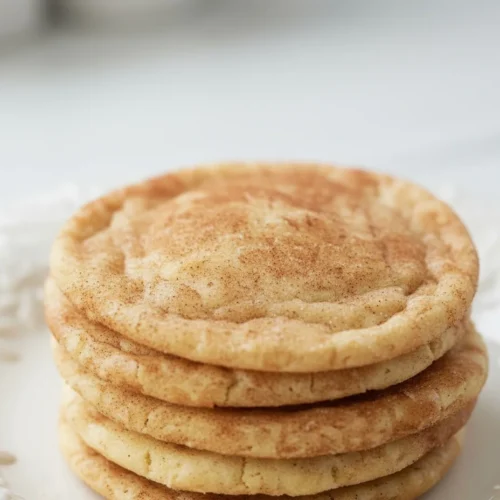
The Best Snickerdoodle Cookie Recipe
Ingredients
- 1 cup Unsalted Butter softened
- 1 1/2 cups Sugar
- 2 large Eggs
- 2 teaspoons Vanilla
- 2 3/4 cup Flour
- 1 1/2 teaspoon Cream of Tartar for less tang, use 1 teaspoon
- 1/2 teaspoon Baking Soda
- 3/4 teaspoon Salt
- Cinnamon-Sugar Mixture:
- 1/4 cup Sugar
- 1 1/2 Tablespoons Cinnamon
Instructions
- Preheat oven to 350 degrees.
- In a large mixing bowl, cream butter and sugar for 4-5 minutes until light and fluffy. Scrape the sides of the bowl and add the eggs and vanilla. Cream for 1-2 minutes longer.
- Stir in flour, cream of tartar, baking soda, and salt, just until combined.
- In a small bowl, stir together sugar and cinnamon.
- If time allows, wrap the dough and let refrigerate for 20-30 minutes. Roll into small balls until round and smooth. Drop into the cinnamon-sugar mixture and coat well. Using a spoon, coat for a second time, ensuring the cookie balls are completely covered. *To make flatter snickerdoodles, press down in the center of the ball before placing in the oven. This helps to keep them from puffing up in the middle. *
- Place on a parchment paper-lined baking sheet. Bake for 9-11 minutes. Let cool for several minutes on baking sheet before removing from the pan.
Notes
Absolutely! Snickerdoodle cookies freeze well and can stay in the freezer for up to 3 months if you keep them in freezer-safe bags.When ready to serve, just remove from the freezer and let come to room temperature which should take about 30 minutes.
How should I store snickerdoodle cookies to keep them soft?
These soft snickerdoodles will stay fresh for up to 24-48 hours if you cover them and store at room temperature.
When do I know snickerdoodles are done baking?
Watch carefully! This will depend on the size of the snickerdoodles (larger ones will take longer to bake), the type of baking pan (light vs. dark), and the accuracy of your oven temperature. I suggest setting the timer for 8-9 minutes and checking to see if they are done baking. Snickerdoodles will look slightly underdone but will set up once removed from the oven.
Step-by-Step Baking Instructions
Mastering the best snickerdoodle cookie recipe involves following precise steps that guarantee consistent results every time you bake. First, preheat your oven to 350 degrees Fahrenheit while you prepare the dough, giving it adequate time to reach the correct temperature for even baking. After creaming butter and sugar, add eggs and vanilla, then gently stir in the dry ingredients just until combined—overmixing develops gluten, which creates tough, dense cookies instead of tender ones. Roll the dough into uniform balls about 1½ inches in diameter, ensuring consistency so all cookies bake at the same rate. Line your baking sheets with parchment paper to prevent sticking and promote even browning on the bottom without burning. Space cookie dough balls at least 2 inches apart because they spread during baking, and crowding causes cookies to merge together into misshapen blobs.
Mixing and Chilling the Dough
While chilling snickerdoodle dough isn’t absolutely required, it dramatically improves texture and flavor when you have 20-30 minutes to spare. Refrigerating the dough solidifies the butter, which slows spreading during baking and results in thicker, chewier cookies with better structure. Recent testing shows that cookies baked immediately turn out thinner and develop a dry, crumbly texture over time, while dough chilled overnight produces cookies with crispy exteriors and moist, chewy centers that stay fresh for days. For best results, wrap the mixed dough tightly and refrigerate for at least 30 minutes or up to 72 hours—longer chilling times allow flavors to meld and deepen, creating more complex taste. If you’re pressed for time, skip the chilling step entirely; your cookies will still taste good but won’t achieve the same thick, bakery-style texture.
Achieving the Perfect Bake Time
Baking snickerdoodles requires careful attention because the difference between perfectly chewy and disappointingly dry comes down to just 1-2 minutes. Set your timer for 9-11 minutes and watch closely, checking at the 8-minute mark if you’re using darker pans that conduct heat more intensely. The cookies should look slightly underdone when you remove them—edges will be set but centers appear puffy and soft, almost raw. Don’t panic; this is exactly what you want because cookies continue baking on the hot pan after leaving the oven, a process called carryover cooking. Let them cool on the baking sheet for several minutes until they firm up enough to transfer to a cooling rack without breaking apart. Baking even one minute too long creates dry, crumbly cookies, while pulling them out when centers still look glossy and soft yields that coveted soft-baked texture everyone loves.
Storage Tips and Common Mistakes
Proper storage keeps your snickerdoodle cookies soft and delicious for days after baking, while understanding common pitfalls prevents disappointing results. These cookies stay fresh for 24-48 hours when stored at room temperature in an airtight container, maintaining their signature soft texture without refrigeration. For longer storage, snickerdoodles freeze beautifully for up to three months in freezer-safe bags, making them perfect for baking ahead during busy holiday seasons. Simply remove frozen cookies from the freezer and let them come to room temperature for about 30 minutes before serving—they’ll taste freshly baked. Additionally, you can freeze unbaked dough balls for up to 2-3 months, rolling them in cinnamon-sugar coating after thawing for 30 minutes. Cookie dough also refrigerates well for up to three days, giving you flexibility to prep ahead and bake fresh cookies whenever cravings strike.
Keeping Snickerdoodles Soft and Fresh
The key to maintaining soft, chewy snickerdoodles lies in proper storage techniques that lock in moisture. Store cooled cookies in an airtight container at room temperature, never in the refrigerator, which dries them out and ruins their tender texture. One clever trick involves placing a slice of fresh bread in the container with your cookies—the bread releases moisture that the cookies absorb, keeping them soft for several days. Replace the bread slice every 24 hours if you notice it hardening, which indicates it’s done its job. Layer cookies between sheets of parchment paper if stacking them, preventing the cinnamon-sugar coating from rubbing off and sticking cookies together. Avoid storing snickerdoodles in plastic bags unless they’re freezer-quality; thin bags allow air circulation that causes cookies to dry out quickly.
Troubleshooting Flat or Hard Cookies
Flat snickerdoodles usually result from butter that’s too soft or completely melted before mixing, which causes excessive spreading during baking. Over-creaming butter and sugar beyond 5 minutes breaks the emulsion, causing fat to leak out and create greasy, flat cookies instead of thick, pillowy ones. Additionally, insufficient flour or too much sugar creates cookies that spread too thin—measure ingredients with a kitchen scale for accuracy rather than relying on measuring cups. Baking cookies on hot pans accelerates spreading before the dough sets, so always cool baking sheets to room temperature between batches. Hard, dry cookies indicate overbaking, even by just one minute, so pull cookies from the oven when centers still look slightly underdone and glossy. Chilling dough for 30 minutes before baking prevents excessive spreading by keeping butter solid longer, allowing cookies to set properly before flattening.
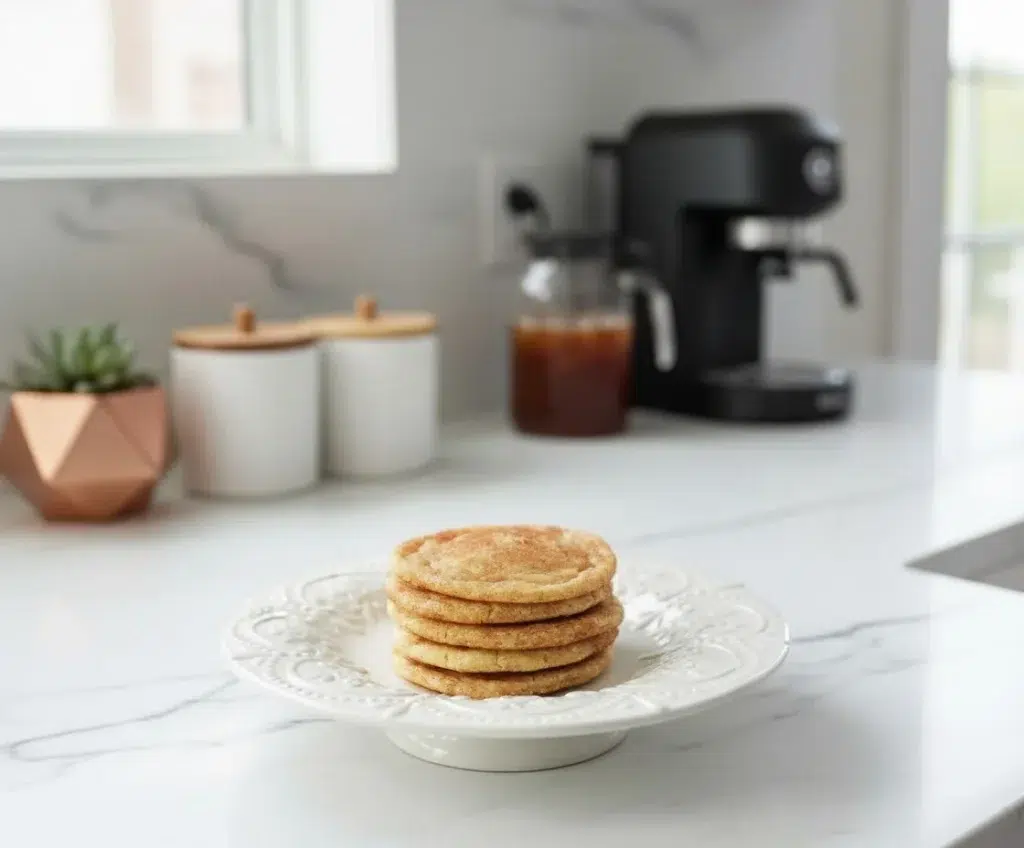
Frequently Asked Questions
Can I freeze Snickerdoodle cookies?
Absolutely, snickerdoodle cookies freeze exceptionally well and maintain their soft, chewy texture for up to three months when stored properly in freezer-safe bags. Cool the baked cookies completely, then freeze them on a baking sheet for about 30 minutes before transferring to an airtight container or freezer bag to prevent sticking together. When you’re ready to serve, simply remove the cookies from the freezer and let them come to room temperature for approximately 30 minutes—they’ll taste freshly baked without any loss of quality. You can also freeze unbaked dough balls for up to three months by flash-freezing them on a baking sheet first, then storing in freezer bags. For best results, roll frozen dough balls in cinnamon-sugar coating after they’ve thawed for about 10 minutes at room temperature, or bake directly from frozen by adding 1-2 extra minutes to the baking time.
How should I store snickerdoodle cookies to keep them soft?
Store snickerdoodles in an airtight container at room temperature, where they’ll stay fresh and maintain their signature soft texture for 24-48 hours. Never refrigerate these cookies because cold temperatures dry them out quickly and turn their tender centers hard and crumbly. One clever trick involves placing a slice of fresh bread inside the storage container with your cookies—the bread releases moisture that the cookies absorb, keeping them soft for several days. Replace the bread slice every 24 hours once it hardens, which indicates it’s done its job preserving cookie moisture. Layer cookies between sheets of parchment paper if you need to stack them, preventing the cinnamon-sugar coating from rubbing off and causing cookies to stick together. Properly stored snickerdoodles can last up to a week at room temperature, though they rarely survive that long before disappearing.
When do I know snickerdoodles are done baking?
Snickerdoodles are perfectly baked when edges appear set and lightly golden while centers still look slightly underdone, puffy, and soft—almost glossy in appearance. This visual cue typically occurs at the 9-11 minute mark, though you should start checking at 8 minutes if you’re using dark baking pans that conduct heat more intensely. The cookies continue baking on the hot pan after leaving the oven through carryover cooking, which sets the centers properly without overbaking. Listen carefully—you might hear a faint sizzle when cookies are done, which signals that moisture is evaporating and the edges are crisping up perfectly. Let cookies rest on the baking sheet for 10 minutes before transferring to a cooling rack, allowing them to firm up enough to move without breaking apart. Baking even one minute too long creates dry, hard cookies instead of the soft, chewy texture that defines exceptional snickerdoodles.
Conclusion
This time-tested snickerdoodle recipe delivers bakery-quality cookies with soft, pillowy centers and signature cinnamon-sugar coating every single time you bake. By following these techniques—proper creaming, double-rolling in cinnamon sugar, and pulling cookies from the oven when they look slightly underdone—you’ll create the best snickerdoodle cookie recipe that rivals any professional bakery. Whether you’re baking for holiday gatherings, weekend treats, or simply satisfying a cinnamon-sugar craving, this foolproof recipe guarantees success. Store them properly in airtight containers, freeze extras for later enjoyment, and watch them disappear faster than you can bake them.
